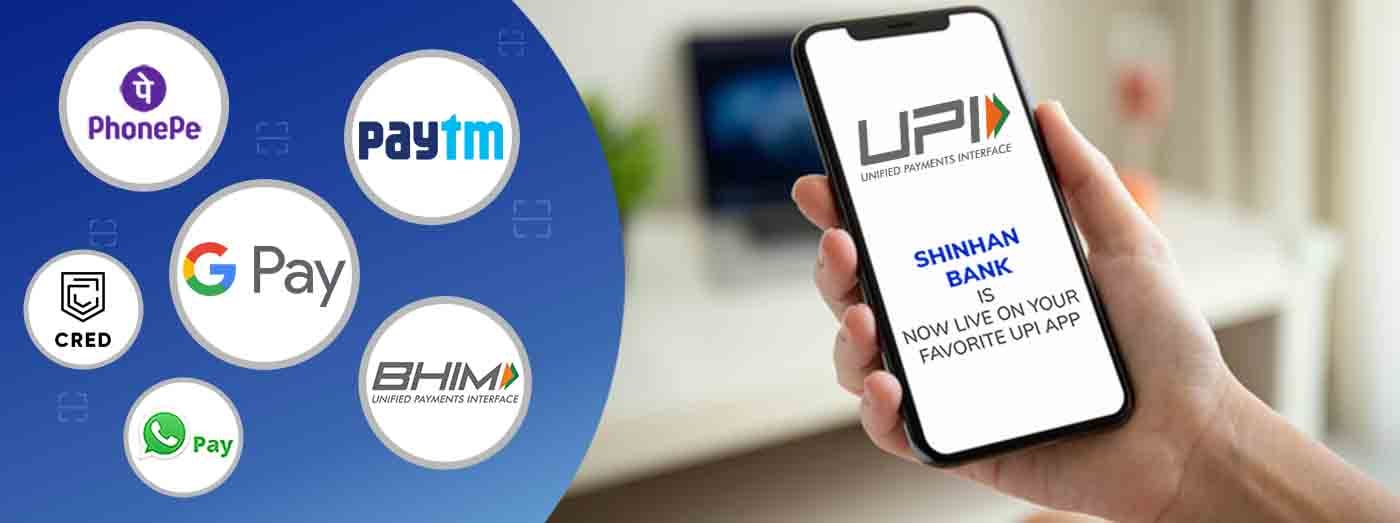
Experience a seamless digital experience

Shinhan India's Digital Banking offers 5 major services: UPI, Digital Saving Account, Mobile Banking, Internet Banking and Bill Payments.
Digital Savings Account Features
Digital Savings Account – V-CIP Features
This report is shared with the branch for further processing.
Mobile Banking Features (SOL APP)
Internet Banking Features
To know about Internet Banking registration and service guide Click here.
Internet Banking and User Guide
| Work Name | Korean | English |
|---|---|---|
| Transfer within Shinhan | ||
| Domestic Transfer Application | ||
| Register Overseas Transfer | ||
| Register / Change approval line | ||
| Approve / Disapprove |
Bill Payment Categories

UPI (Unified Payments Interface) is a real-time payment system that facilitates instant fund transfers between bank accounts in India. It allows users to link multiple bank accounts to a single mobile application, providing a seamless and secure platform for making payments. UPI is regulated by the National Payments Corporation of India (NPCI).
UPI was launched in India by the Reserve Bank of India (RBI) and NPCI in collaboration with various banks and payment service providers. UPI aims to simplify digital payments and promote financial inclusion by enabling easy and convenient money transfers.
UPI, which stands for Unified Payments Interface, is a convenient and secure way to make payments, as it eliminates the need for traditional methods like cash or cards.
To use UPI, you need two important pieces of information: UPI ID and UPI PIN. UPI ID is a unique virtual payment address that you create during the registration process. It is similar to an email address, but instead of letters, it consists of numbers or alphabets. For example, your UPI ID could be something like johnsmith@upi or 1234567890@upi. On Paytm, your UPI ID will look like 1234567890@paytm.
On the other hand, a UPI PIN is a four or six-digit numeric password that you set up during the registration process. It acts as a secure key to authorize transactions made through UPI. Just like you would enter a PIN for your ATM card, you need to enter your UPI PIN when initiating a UPI transaction to authenticate and complete the payment.
With UPI, you can send money to friends, and family, or even pay for goods and services directly from your bank account. It simplifies the payment process and allows you to make transactions anytime, anywhere, without the hassle of carrying cash or physical cards.
Step 1: Download the UPI mobile payment application from App Store or Google Playstore.
Step 2: Enter your mobile number. If you have a dual SIM phone, choose the SIM slot with your mobile number.
Step 3: Verify your mobile number by sending an SMS from your number.
Step 4: Select Shinhan Bank from the list and ensure it matches the mobile number registered with Shinhan Bank.
Step 5: Your Savings Bank account details will be fetched, kindly select the Shinhan Bank account which you wish to link to UPI
Step 5: Set up a UPI PIN if it’s your first time linking the bank. You’ll need your debit card details for this.
Step 6: Your bank account is now linked via UPI, and you’re ready to make your first payment.
UPI transactions decline in various situations. Here are some common reasons for UPI transaction declines:
To use UPI safely, here are some important tips to follow:

 About Us
About Us
 Digital
Banking
Digital
Banking Our FAQ section has the answers that you are looking for!